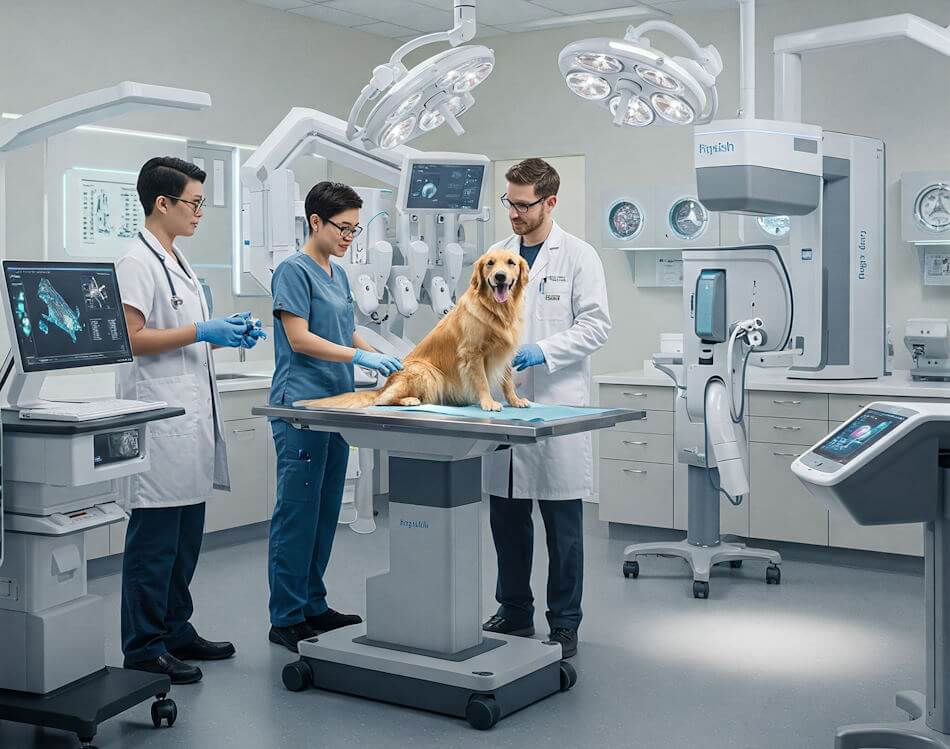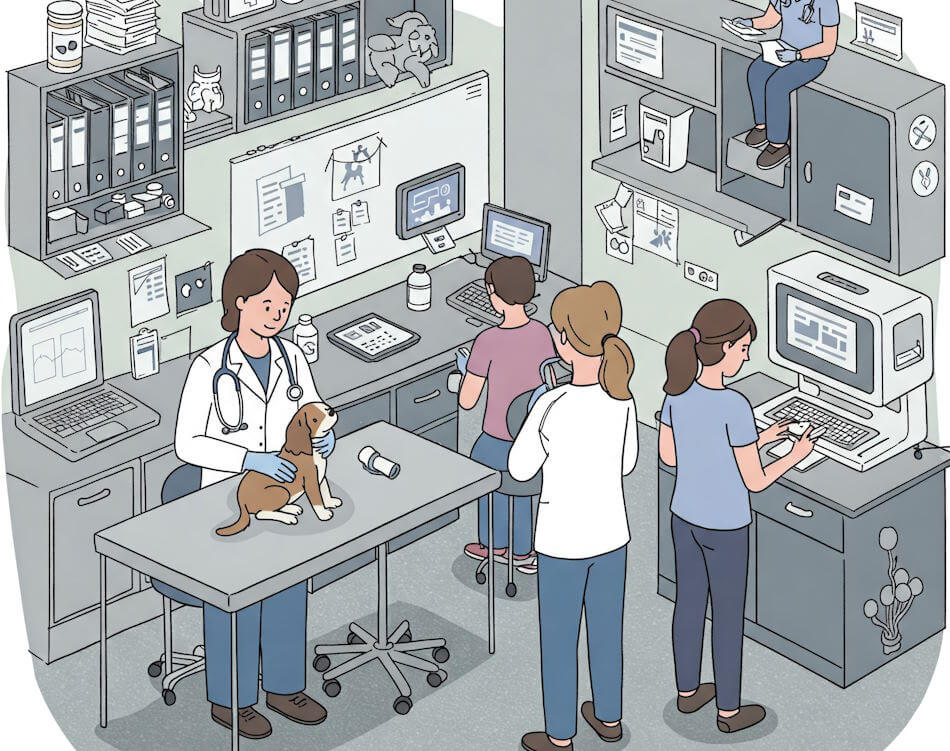Client loyalty programs have gained significant traction across various industries, particularly in sectors where relationships and trust are paramount, such as veterinary care. A client loyalty program is designed to reward customers for their continued patronage, encouraging repeat visits and fostering a sense of belonging. In the context of veterinary clinics, these programs can take many forms, including discounts on services, points systems that accumulate with each visit, or exclusive access to special events and promotions.
The primary purpose of implementing a client loyalty program in a veterinary clinic is to improve customer retention. Statistics reveal that acquiring a new customer can cost five times more than retaining an existing one. By focusing on client loyalty, veterinary clinics can significantly reduce turnover rates and cultivate deep, lasting relationships with pet owners. In this industry, where emotional connections often dictate consumer behavior, establishing a solid rapport with clients can translate to more frequent visits and higher overall profitability.
Moreover, the introduction of a well-structured loyalty program can enhance client engagement and deepen the bond between pet owners and their veterinary service providers. Regular communication, such as reminders for vaccinations or wellness check-ups, along with incentives, can motivate clients to interact consistently with the clinic. This engagement fosters a community atmosphere, making clients feel valued and appreciated, which is particularly crucial in the competitive veterinary landscape.
In essence, a thoughtfully crafted client loyalty program can serve as an effective mechanism for veterinary clinics to not only retain clients but also enhance their overall experience. The resultant trust and satisfaction can lead to positive referrals and strengthened community relationships, which are invaluable in this field.
Identifying Your Goals and Objectives
When designing a client loyalty program for your veterinary clinic, it is essential to establish clear goals and objectives that align with both the needs of your clients and the operations of your practice. A primary aim of such a program is often to enhance client retention rates. By fostering a stronger bond between the clinic and pet owners, you can encourage repeat visits and long-term relationships. Understanding your clientele’s preferences through surveys or feedback can help tailor your program to better meet their needs, ultimately resulting in increased loyalty.
Another objective to consider is the potential to increase service upsells. Many veterinary clinics provide a range of services that extend beyond basic medical care, such as grooming, training, and nutritional advice. By incentivizing clients to explore these additional services through loyalty rewards, you can not only boost revenue but also improve the overall health and well-being of pets in your care. Crafting exclusive offers or discounts on bundled services can significantly influence client decisions, making them more likely to engage in diverse aspects of what your clinic offers.
Moreover, the program should aim to improve overall client satisfaction. This encompasses ensuring that clients feel appreciated and valued, which can turn a typical visit into a memorable experience. Consider implementing recognition programs that acknowledge milestones—such as annual check-ups or birthdays—alongside offering personalized care to make clients feel special. By prioritizing satisfaction, you cultivate an environment where clients feel encouraged to share their positive experiences with others, thereby amplifying your clinic’s reputation.
Ultimately, defining what success looks like for your loyalty program is crucial. Set measurable benchmarks, such as targeted retention percentages or increases in appointments for additional services. With well-defined goals, your clinic can effectively monitor the program’s impact and make informed adjustments as needed.
Understanding Your Client Base
In the competitive landscape of veterinary care, understanding your client base is critical for the development of a successful client loyalty program. Knowing your clients’ demographics—such as age, income level, pet ownership rates, and geographical location—enables your clinic to tailor services and programs that resonate with their specific needs and preferences. This informed approach can significantly enhance client satisfaction and retention.
Effective methods for gathering client data include surveys, interviews, and analyzing clinic visit records. Surveys can be distributed through various channels, such as email, social media, or in-clinic visits, allowing clients to provide feedback on their experiences and preferences. Similarly, conducting interviews offers in-depth insights into clients’ expectations and concerns, which can be beneficial for shaping your loyalty program. Furthermore, reviewing existing client records can reveal patterns in service usage and common needs that warrant attention.
Once you have collected the necessary data, analyzing it will reveal trends and preferences that are crucial for designing a loyalty program. For example, if a significant portion of your clientele indicates a preference for wellness services over emergency care, your loyalty program could be structured to promote wellness packages or discounts on preventive care services. Moreover, understanding client behavior, such as visit frequency and spending patterns, can guide the implementation of tiered loyalty benefits tailored to encourage more frequent visits and higher expenditure.
In essence, taking the time to understand your client demographics and preferences not only strengthens the foundation of your loyalty program but also contributes to a better in-clinic experience. A program that aligns with client needs fosters a sense of community, loyalty, and trust, ultimately benefiting both your veterinary clinic and its clients. By demonstrating that you value their input and are willing to adapt, you can create a more impactful and lasting loyalty program.
Designing Your Loyalty Program Structure
When creating a loyalty program for veterinary clinics, it is essential to consider various structures that can appeal to clients while aligning with your clinic’s goals. Three popular types of loyalty programs include point systems, tiered rewards, and referral bonuses, each with its unique advantages and disadvantages.
The point system is one of the simplest loyalty program structures, where clients earn points for every dollar spent. Clients can then redeem these points for discounts or free services. This system is easy to understand and encourages repeat visits as clients are motivated to accumulate points. However, it can sometimes lead to minimal engagement if clients do not feel they can easily earn and redeem their points.
Another effective option is the tiered rewards program. In this structure, clients ascend through different levels based on their spending or engagement with the clinic. Each tier offers increasingly valuable rewards, which encourages clients to seek higher levels of loyalty. While this approach can increase client retention and engagement, it requires careful management to ensure that tiers are attainable and the associated rewards are appealing.
Referral bonuses represent another strategic option for veterinary clinics. This program incentivizes existing clients to refer new customers by offering rewards, such as discounts or service credits, when successful referrals are made. This approach not only helps acquire new clients but also strengthens relationships with current ones. The downside, however, is that it may take longer to see the benefits, as it depends on clients actively promoting the clinic.
Choosing the best loyalty program structure depends on your clinic’s objectives and client preferences. Consider conducting surveys to gauge what motivates your clients most. Balancing simplicity and engagement within the chosen structure will ensure the loyalty program is beneficial for both your veterinary practice and its clientele.
Incorporating Technology and Tools
In today’s competitive landscape, utilizing technology effectively is crucial for the success of a client loyalty program in a veterinary clinic. Various technological tools and software options enable clinics to manage their loyalty programs efficiently while enhancing the overall client experience. Customer Relationship Management (CRM) systems, mobile applications, and social media platforms stand out as valuable resources to engage clients and streamline operations.
CRM systems play a pivotal role in managing client information, tracking appointment history, and noting pet care preferences. By using a CRM, veterinary clinics can personalize interactions with clients, ensuring tailored communication that resonates with their needs. For instance, CRM systems can send automated reminders for vaccinations or check-ups, reinforcing the clinic’s commitment to pet health while also promoting loyalty program benefits. Additionally, they facilitate the tracking of loyalty points and rewards, providing clarity for both clients and staff.
Mobile applications have also gained popularity, particularly in engaging a tech-savvy clientele. A dedicated app can offer features such as appointment scheduling, push notifications for promotions, and a straightforward interface for clients to check their loyalty program status. Mobile apps serve as an extension of the clinic, enhancing convenience and reinforcing loyalty among clients. Furthermore, they often include social sharing capabilities, amplifying engagement through client referrals and positive reviews.
Lastly, social media platforms are vital in fostering community connections and sharing valuable content related to pet care. By regularly engaging with clients on social platforms, clinics can share informative articles, updates about loyalty programs, and highlight client success stories. This approach not only strengthens client relationships but also helps clinics remain top-of-mind, encouraging repeat visits and participation in the loyalty program. The integration of these technological tools paves the way for a more sophisticated loyalty program that values and nurtures client relationships.
Promoting Your Loyalty Program
Promoting a loyalty program effectively is crucial for ensuring its success in your veterinary clinic. A well-designed program can enhance client engagement, thereby fostering long-term relationships with pet owners. One of the primary strategies for marketing your client loyalty program involves utilizing in-clinic signage. Eye-catching posters or informational brochures placed in strategic locations, such as the waiting area or consultation rooms, can draw attention and encourage discussions about the program among clients. It is important to design these materials with clear, concise messaging that outlines the program’s benefits, such as discounts, exclusive services, or points that can be redeemed for pet care.
Another effective approach is to leverage email marketing. By sending targeted emails to your existing client base, you can inform them about the loyalty program’s launch and provide details on how to enroll. Ensure that your emails include engaging visuals and testimonials from satisfied clients to help create a personal connection and enhance credibility. A compelling subject line will also increase open rates and interest in your offerings.
Social media platforms present another valuable avenue for promoting your loyalty program. Regular posts highlighting the rewards, special promotions, or success stories of clients who benefit from the program can drive engagement. Utilize engaging content formats, such as videos or infographics, to convey the program’s advantages visually. Additionally, using paid advertising on platforms like Facebook or Instagram can help extend your reach and attract new clients while informing existing ones about the program. It is essential to cultivate a sense of community around the loyalty program, encouraging clients to share their experiences and opinions, which can further amplify your marketing efforts.
Measuring Success and Feedback
To ensure that your veterinary clinic’s client loyalty program is effective, it is imperative to consistently monitor and measure its success. Key performance indicators (KPIs) play a crucial role in analyzing the program’s impact on your business operations. One primary KPI to consider is client retention rates, which gauge the percentage of returning clients versus new clients. A high retention rate indicates that your loyalty program is successfully fostering long-term relationships with pet owners, contributing to the stability and growth of your clinic.
Engagement levels are another essential metric. This encompasses how often clients participate in your loyalty program and interact with various offerings such as promotions, rewards, and educational content. Tracking engagement can provide valuable insights into client preferences and behaviors, allowing you to tailor your initiatives to meet their needs more effectively. By employing customer relationship management (CRM) software or loyalty program platforms, you can easily gather data on these KPIs and generate actionable reports.
Feedback from clients is equally critical in refining and improving your loyalty program. Regularly soliciting feedback through surveys or direct communication helps to gauge client satisfaction and identify areas for enhancement. This engagement not only makes clients feel valued but also gives them a voice in shaping the program. Consider incorporating a feedback mechanism within the loyalty program itself, such as a reward for submitting a review or participating in a survey. This can contribute to better client retention and higher engagement levels as clients feel their opinions are taken into account.
Incorporating both data analysis and client feedback will enable your veterinary clinic to refine its loyalty program continually. By diligently measuring success and integrating client insights, you can create a dynamic and responsive program that meets the evolving needs of your clients.
Case Studies and Success Stories
Numerous veterinary clinics have successfully implemented client loyalty programs that not only increased retention rates but also enhanced client engagement. One noteworthy example is “Happy Tails Veterinary Clinic” in Texas, which introduced a point-based loyalty program that rewarded clients with points for every visit, referral, and purchase of veterinary products. Clients could accumulate points and redeem them for discounts or free services, significantly boosting their interaction with the clinic. According to clinic statistics, there was a 40% increase in repeat visits within the first six months of launching this program.
Another exemplary case is “Paws and Claws Animal Hospital” in California. They took a different approach by developing a tiered membership program. Clients could join at different levels, each offering unique perks such as priority boarding, reduced exam fees, and exclusive invitations to pet care workshops. This strategy not only catered to a diverse client base but also encouraged clients to invest more in their pet’s health. The clinic reported an impressive 30% increase in annual revenue as members upgraded to higher tiers, illustrating the effectiveness of a multifaceted loyalty strategy.
However, the implementation of such programs is not without challenges. For instance, both clinics faced concerns about the initial costs and the resources required to manage the programs effectively. Happy Tails addressed this by using automated software to track client interactions and manage point allocations, minimizing administrative work. Paws and Claws developed a marketing campaign to educate clients about the benefits of membership, ensuring that clients understood how to make the most of the program. These examples underscore the importance of adapting loyalty strategies to fit specific clinic needs while ensuring clear communication with clients, ultimately leading to sustained success in client loyalty programs across veterinary practices.
Conclusion and Next Steps
In the competitive landscape of veterinary care, an effective client loyalty program is essential for fostering long-term relationships with pet owners, ultimately enhancing their experience and promoting repeat visits to your clinic. The key components of a successful loyalty program typically include a structured points system, personalized communication, and various reward options tailored to meet the distinct needs of pet owners. By acknowledging client loyalty through a systematic rewards approach, veterinary clinics can significantly improve client retention and satisfaction.
As highlighted throughout this blog post, beginning the development of a client loyalty program necessitates careful planning and consideration. First, conduct an analysis of your current client demographics to identify their preferences and needs. This information will serve as a foundation upon which you can build an engaging program. Educate your staff thoroughly on the program’s guidelines and benefits to ensure consistent messaging and encouragement when discussing the loyalty incentives with clients.
Next, consider integrating technology to manage rewards and streamline communication. Utilizing a user-friendly digital platform can enhance the program’s efficiency and engagement, making it easier for pet owners to track their loyalty points and stay informed about special offers. Furthermore, solicit feedback from your clients after implementing the program to make necessary adjustments and improvements, ensuring that it evolves with their preferences over time.
We encourage you to take the essential steps forward in designing your client loyalty program. Start by brainstorming potential rewards and program structures that resonate with your clientele. Engaging your clients in conversations about their preferences may yield valuable insights that drive the success of your program. Additionally, we invite you to share your ideas and experiences in the comments below, contributing to a collective knowledge base that can benefit veterinary clinics everywhere.





